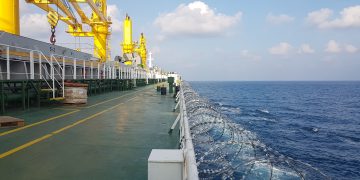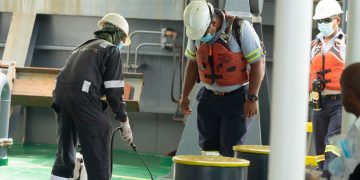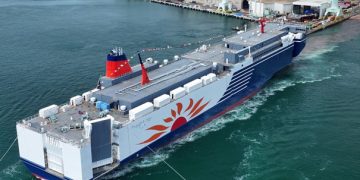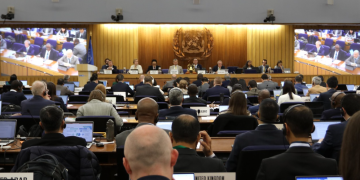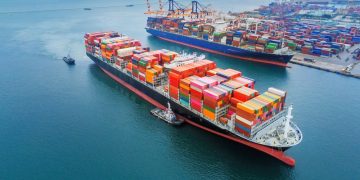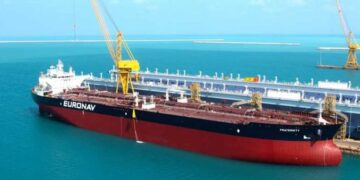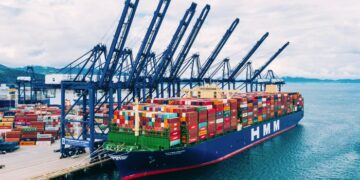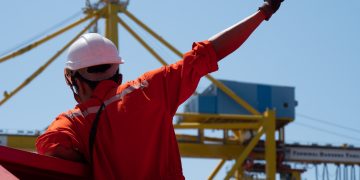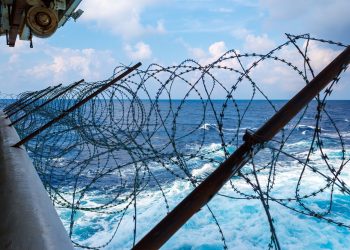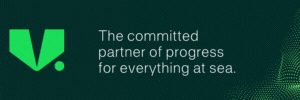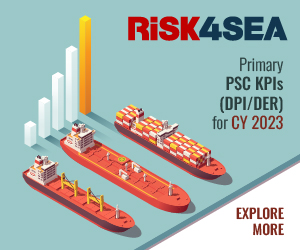The Neptune Declaration Crew Change Indicator for August revealed that only 15.3% of seafarers are vaccinated, according to the first vaccination data.
In comparison, the share of the population fully vaccinated against Covid-19 in large shipping nations in Europe, North America and Asia is at around 50%. This shows that despite progress in seafarer vaccinations, their rates are much behind those of large shipping nations.
While the percentage of vaccinated seafarers remains much below North America, the European Union and some Asian nations, this percentage is closer to those of Africa, Asia and South America. For instance, the vaccination rate in Africa is at 1.8%, that of Asia (not including China) is at 10.9%, and that of South America is at 19.9%.
This reflects the uneven global distribution of vaccines and large variation in vaccine access across nationalities.
Additionally, the contributing ship managers have highlighted the following areas where they are finding most difficulties vaccinating seafarers:
- Leading maritime crew nations continue to have low vaccination rates and seafarers continue to have limited vaccine access.
- The largest challenge is securing the supply of vaccines and severe supply challenges have been identified in the Philippines, Myanmar, Indonesia, Venezuela and Latvia.
- Recognition of vaccinations also continues to be a challenge due to the differing kinds of vaccines or due to vaccination in different locations.
- There continues to be resistance by some seafarers to be vaccinated.
- Few countries are offering vaccination for seafarers while serving on board the vessels.
Seafarers are starting to get vaccinated, especially those from developed countries. Programs in the US and some European countries are offering vaccines to international seafarers, but many more countries must follow suit to solve the crew change crisis.
…says Kasper Søgaard, Managing Director, Head of Institutional Strategy and Development, Global Maritime Forum.
Ship managers identify the Philippines, Myanmar, Indonesia, Venezuela and Latvia as the areas with the largest challenge is securing the supply of vaccines.
The August Indicator also confirms that the crew change crisis remains unresolved. The number of seafarers onboard vessels beyond the expiry of their contract has slightly increased from 8.8% to 9.0% in the last month and the number of seafarers onboard vessels for over 11 months has risen from 1% to 1.3%. The Maritime Labour Convention states that the maximum continuous period a seafarer should serve on board a vessel without leave is 11 months.
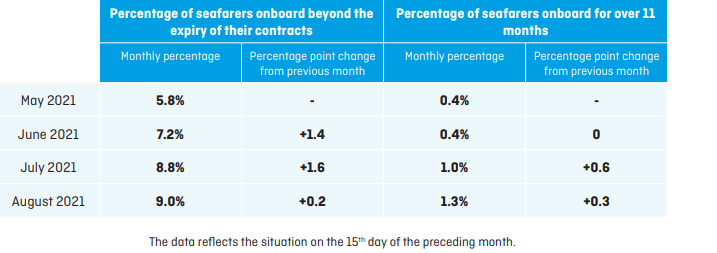
To remind the Neptune Declaration Crew Change Indicator builds on aggregated data from 10 leading ship managers: Anglo-Eastern, Bernhard Schulte, Columbia Shipmanagement, Fleet Management (FLEET), OSM, Synergy Marine, Thome, V.Group, Wallem, and Wilhelmsen Ship Management, which collectively have about 90,000 seafarers currently onboard.
explore the August Neptune Declaration Crew Change Indicator here






